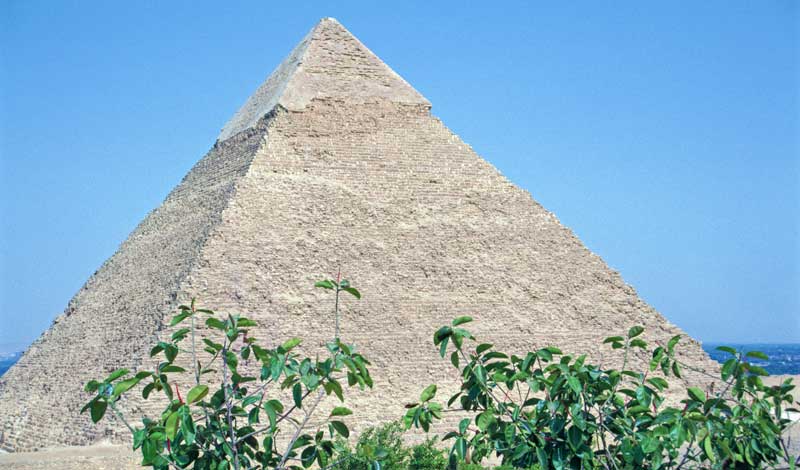The day was June 17, 1992, the time, past 3 o’clock in the afternoon. We were 8 miles from Cairo, a city of 10 million. Driving through the city along the west bank of the Nile, one suddenly finds oneself in the desert. Ahead, atop a plateau, stand the three pyramids of Giza.
It was my first visit to Egypt and the pyramids in 30 years. Yet before these eternal houses, 30 years are but a fleeting moment. The Egyptian people have a saying: “Time laughs at everything; but the pyramids laugh at time.” Standing before these monuments to eternity, I felt a surge of emotion. “I, too, want to build an indestructible castle of capable people that will remain for all time!” I pledged to myself. …
The great stone pyramids signify death and eternity; the flora signifies life and impermanence. Here is a mysterious expression of the undulating cycle of life and death that pervades the cosmos. Reflexively, I aim my camera. …
One recent hypothesis has it that there is a direct correspondence between the size and arrangement of the three pyramids of Giza and the positions and intensities of the three stars that make up the belt of the hunter in the constellation Orion. Indeed, the pyramids may well have been born of people’s prayer and desire to bring the eternity of the stars to Earth’s surface. …
“Let us leave behind this living proof!”
“Let us open ourselves to the eternity of life!”
“If we call forth the limits of our human potential, what a magnificent thing we can build! We will show to future generations the real power of the people!”
The pyramids continue to ask us, “What is it that you will dedicate your life to; what will you leave behind?”
The pyramids stand as monuments to human accomplishment.
Adapted from an essay in Our Beautiful Earth: Photos and Essays of My Travels, by Daisaku Ikeda, April 2, 2000, Seikyo Press, Tokyo, Japan.
You are reading {{ meterCount }} of {{ meterMax }} free premium articles

